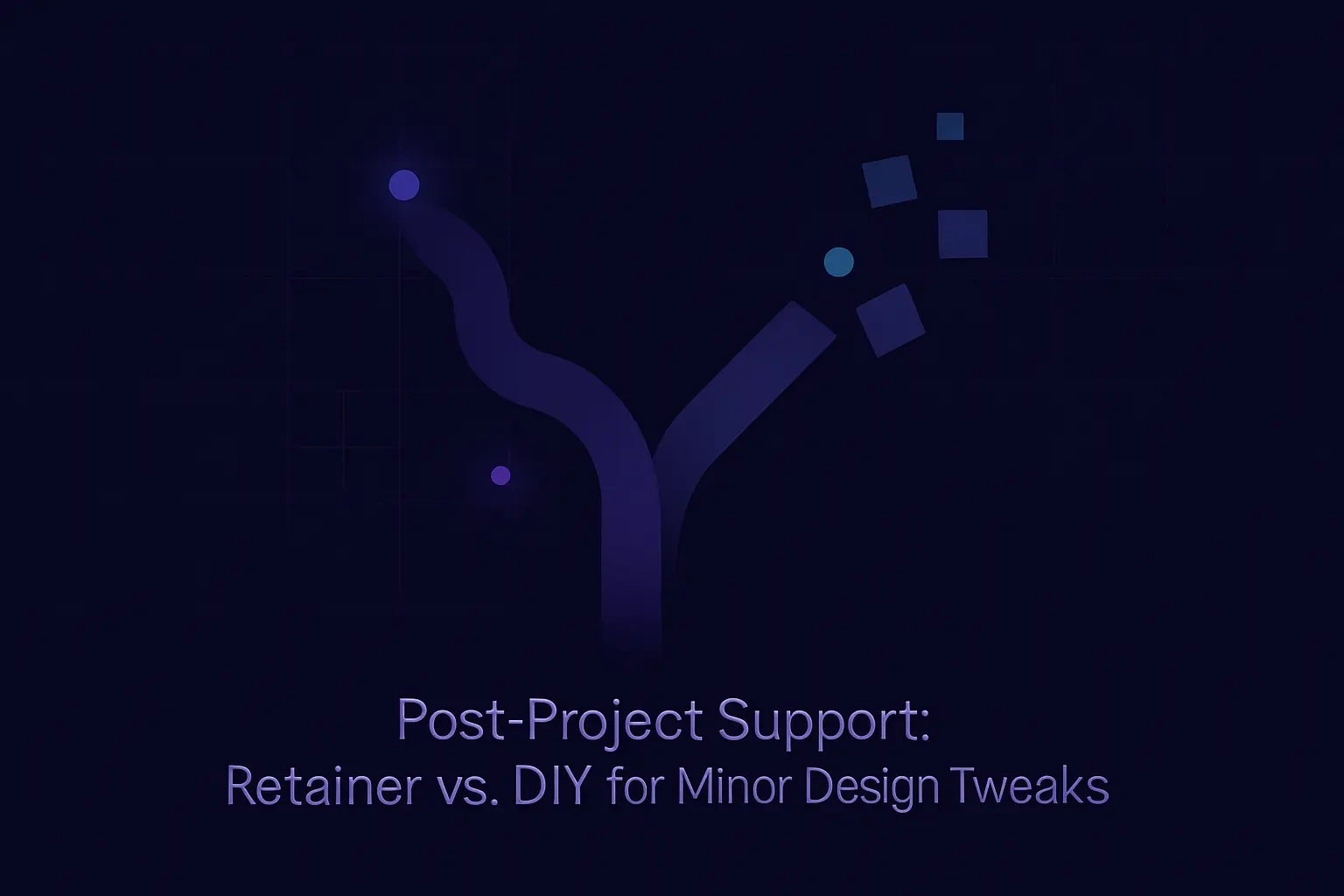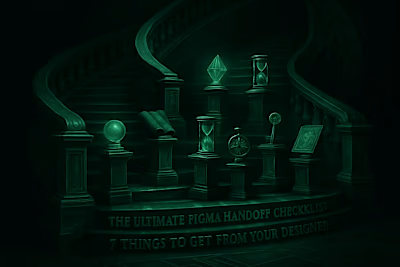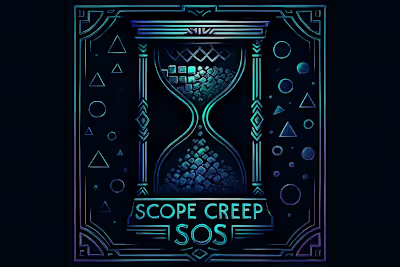Post-Project Support: Retainer vs. DIY for Minor Design Tweaks

Post-Project Support: Retainer vs. DIY for Minor Design Tweaks
The Case for a Design Retainer
When Consistency is Crucial
For Frequent or Complex Updates
When You Lack In-House Expertise
The DIY Approach: When to Handle Tweaks In-House
For Simple, Pre-Defined Changes
When You Have a Rock-Solid Design System
If Your Budget is a Primary Constraint
Finding a Middle Ground: The Hybrid Approach
Define 'Minor Tweak' vs. 'New Project'
Project-Based Re-Engagement
Making Your Decision
References
Post-Project Support: Retainer vs. DIY for Minor Design Tweaks
Your new website or app is live, but design work is rarely a one-and-done deal. Small needs will inevitably pop up: a new promotional banner, a minor text change, or a tweaked icon. This leaves you with a critical choice: should you handle these minor tweaks in-house (DIY), or should you keep your trusted designer on call with a retainer?
Making the right decision depends on your team's skills, your budget, and the importance of design consistency. If you're considering bringing in professional help, you might want to hire Figma designers who understand modern design workflows. A great first step is always writing a review that counts to maintain a good relationship for potential future work.
The reality is that most businesses face this decision within weeks of launching. That perfect homepage suddenly needs a holiday banner. Your product page requires new pricing tables. The about section needs updated team photos. These aren't major redesigns, but they're important enough to get right.
So how do you decide between keeping your designer on speed dial or rolling up your sleeves? Let's break down both approaches and help you find the perfect fit for your situation.
The Case for a Design Retainer
A retainer is an agreement where you pay a designer for a set number of hours each month. This ensures they are available for your needs and is ideal in several scenarios.
Think of it like having a designer on your team, but without the full-time commitment. You might pay for 10, 20, or 40 hours per month, depending on your needs. The designer blocks out this time specifically for your projects, giving you priority access to their skills.
The beauty of a retainer lies in its predictability. You know exactly what you're spending each month. Your designer knows exactly what to expect. There's no awkward negotiation for every tiny change. It's a win-win that keeps your design work flowing smoothly.
Many successful companies use this model. They've learned that design consistency isn't just about looking good—it's about building trust with users. When every element feels cohesive, customers notice. They might not consciously realize it, but they feel more confident in your brand.
When Consistency is Crucial
If maintaining a pixel-perfect, consistent brand image is a top priority, a professional designer is your best bet. They built the design system and know how to apply it correctly, ensuring even small changes align with the overall aesthetic.
Picture this scenario: You need to add a new feature announcement to your homepage. Sounds simple, right? But there are dozens of micro-decisions involved. What shade of blue matches your brand? How much padding should surround the text? Which font weight creates the right hierarchy?
Your original designer knows these answers instinctively. They remember why certain decisions were made. They understand the subtle rules that make your design feel cohesive. When they add that announcement, it won't just fit—it'll feel like it was always meant to be there.
I've seen companies try to save money by having non-designers make "simple" updates. The results are usually obvious. Text that's slightly off-center. Colors that are close but not quite right. Spacing that feels cramped or awkward. These small inconsistencies add up fast, eroding the professional polish of your site.
For Frequent or Complex Updates
If you anticipate needing regular updates—like weekly marketing graphics, new feature mockups, or A/B testing variations—a retainer is often more cost-effective and efficient than starting a new project each time.
Let's do some quick math. Say you need design help twice a month. Each time, you spend an hour finding a designer, another hour briefing them, and pay a premium for the rush job. That's already 4-6 hours of overhead, plus higher rates for one-off projects.
With a retainer, that overhead disappears. Your designer already knows your brand, your preferences, and your systems. They can jump straight into the work. What might take a new designer 5 hours takes them 2. Over time, these efficiencies really add up.
Plus, there's the relationship factor. A designer on retainer becomes invested in your success. They start anticipating your needs. They might proactively suggest improvements. They become a true partner, not just a vendor.
When You Lack In-House Expertise
If no one on your team is comfortable working in Figma or has a strong design eye, a retainer provides peace of mind. You have a dedicated expert ready to jump in, preventing amateur mistakes that can degrade your design over time.
Design tools have gotten more user-friendly, but they're still complex. Figma might look straightforward, but there's a big difference between knowing which buttons to click and understanding design principles. It's like giving someone Photoshop and expecting them to retouch photos professionally.
Even seemingly simple tasks can go wrong without expertise. Resizing an image incorrectly can make it pixelated. Changing text without adjusting line height can make it hard to read. Moving elements without understanding alignment can make your whole page feel off-balance.
A designer on retainer acts as your safety net. They can handle the updates directly or guide your team through the process. They'll catch mistakes before they go live. They'll suggest better solutions you hadn't considered. Most importantly, they'll maintain the quality that attracted customers in the first place.
The DIY Approach: When to Handle Tweaks In-House
For some organizations, especially those with the right skills and simple needs, handling minor changes internally can be a practical choice.
The DIY route isn't about cutting corners—it's about being strategic with your resources. When done right, it can actually speed up your workflow. No waiting for designer availability. No back-and-forth on simple changes. Just quick updates that keep your site fresh and current.
But here's the key: DIY only works when you have the right foundation. You need clear guidelines, proper tools, and realistic expectations about what you can handle internally. Without these elements, DIY quickly becomes "Destroy It Yourself."
For Simple, Pre-Defined Changes
If the tweaks are limited to simple content updates, like changing the text in a designated field or swapping an image within a pre-defined template, this can often be handled by a content manager or marketer.
Think of these as "safe zones" for non-designers. Your designer has already created templates with specific areas for updates. The font, size, and spacing are locked in. All you're doing is dropping in new content.
For example, maybe you have a testimonial section with placeholder text. Swapping in a real customer quote is straightforward. The design remains intact because you're working within predetermined boundaries. Same goes for updating product prices, changing office hours, or refreshing team bios.
The trick is being honest about what counts as "simple." Changing text is usually safe. Adjusting layouts is not. Swapping images works if they're the same dimensions. Redesigning how those images display crosses into dangerous territory.
When You Have a Rock-Solid Design System
A comprehensive design system and component library, delivered by your designer at project handoff, can serve as a powerful guide. If the rules for typography, color, and components are clear, it's easier for an internal team member to make small changes without breaking the design.
A great design system is like having a designer's brain in document form. It tells you exactly which colors to use when. It shows approved button styles. It explains spacing rules. With this roadmap, even non-designers can make updates that look professional.
The best design systems include real examples. Not just "use 16px spacing between elements" but visual guides showing that spacing in action. They have dos and don'ts. They explain the why behind decisions, not just the what.
I've seen marketing teams successfully manage their own updates using robust design systems. They can create new landing pages by combining existing components. They can design social media graphics using approved templates. The key is that they're assembling pre-made pieces, not creating from scratch.
If Your Budget is a Primary Constraint
For early-stage startups or businesses with tight budgets, the cost of a monthly retainer may not be feasible. In these cases, a DIY approach for the smallest tasks might be a necessity.
Let's be real—not every business can afford $1,000+ monthly for design support. When you're bootstrapping, every dollar counts. In these situations, DIY isn't just an option; it's survival.
The good news? Constraints often breed creativity. I've seen scrappy startups create impressive results with limited resources. They focus on what matters most. They learn just enough design principles to avoid major mistakes. They use templates and tools to punch above their weight.
If budget forces you down the DIY path, invest in education. Spend a few hours learning basic design principles. Understand concepts like visual hierarchy, white space, and color theory. These fundamentals will help you make better decisions, even with limited skills.
Finding a Middle Ground: The Hybrid Approach
You don't always have to choose one extreme. A hybrid model can offer the best of both worlds.
Smart businesses often blend both strategies. They handle routine updates internally but bring in professionals for anything complex. This approach maximizes efficiency while maintaining quality where it matters most.
The hybrid model requires clear communication and boundaries. Everyone needs to understand what falls under DIY territory and what requires professional help. Without these guidelines, you'll end up with confusion, duplicated efforts, and inconsistent results.
Define 'Minor Tweak' vs. 'New Project'
Create clear guidelines with your team. A 'minor tweak' might be a text change, while changing a page layout is a 'new project' that requires the original designer. This prevents 'scope creep' for your internal team.
Start by listing specific tasks in each category. Minor tweaks might include updating copy, swapping images in existing slots, or changing dates and prices. New projects could cover adding sections, creating new templates, or redesigning existing elements.
Make these definitions visual when possible. Screenshot examples of changes that fall into each category. Show what happens when someone crosses the line—like how a "simple" layout change can break responsive design on mobile devices.
Regular check-ins help maintain these boundaries. Maybe you review recent updates monthly, identifying which DIY attempts worked and which should have gone to a designer. This feedback loop helps your team calibrate their judgment over time.
Project-Based Re-Engagement
Instead of a retainer, you can opt to re-hire your preferred designer on a project-by-project basis. This works well if your needs are infrequent (e.g., once a quarter). You maintain the relationship and quality without the monthly commitment.
This approach offers flexibility without sacrificing quality. You might handle daily updates internally, then bring in your designer quarterly for larger updates. They can review your DIY work, fix any issues, and tackle bigger changes all at once.
The key to successful project-based work is maintaining the relationship between projects. Send your designer occasional updates about how the design is performing. Share user feedback. Let them know about upcoming needs. This keeps them engaged and ready to help when needed.
Consider setting up a lightweight agreement for these periodic engagements. Maybe you guarantee a certain number of hours per quarter, giving your designer predictable income and you predictable access. It's less commitment than a full retainer but more structure than starting fresh each time.
Making Your Decision
Choosing between a retainer and DIY isn't just about money—it's about finding the right fit for your specific situation. Consider your team's skills, your update frequency, and the importance of design to your business success.
If design is central to your value proposition, lean toward professional support. If you're in a fast-moving industry with constant updates, a retainer provides the agility you need. If you're resource-constrained but have capable team members, a well-planned DIY approach can work.
Remember, you can always adjust your approach as you grow. Many businesses start with DIY, move to project-based help, and eventually graduate to retainers as their needs expand. The important thing is making an intentional choice rather than defaulting to whatever seems easiest.
Whatever path you choose, invest in the relationship with your designer. Even if you're handling updates internally now, you'll likely need professional help eventually. A designer who knows your brand and understands your goals is worth their weight in gold when that time comes.
References
Like this project
Posted Jul 6, 2025
The project is done, but what about small updates? Discover whether you should keep your designer on a retainer for post-project support or handle minor tweaks yourself.









